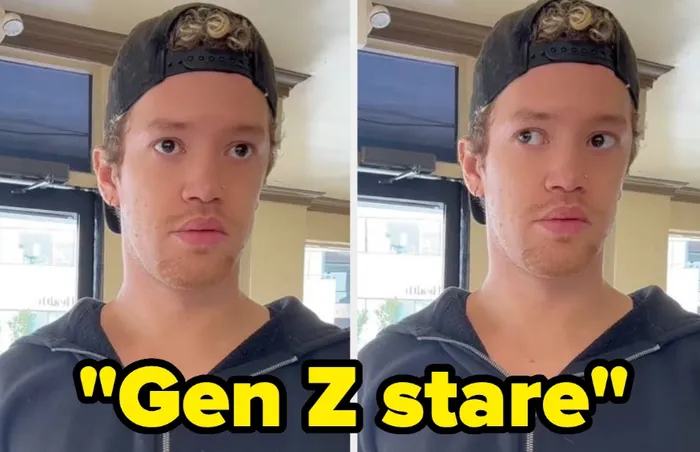The Gen Z stare: Why it’s driving older generations crazy

From home to the office, the Gen Z Stare Is creating a communication divide.
Image: TikTok
As a mother to a tween daughter I’ve come to know “that look” all too well.
You know the one: you're in the middle of asking a question or trying to start a meaningful conversation, and in response, you’re met with a blank, expressionless stare. No nod, no blink, no grunt. Just silence. I find it infuriating.
At first, I thought it was teenage attitude, but it turns out this vacant expression has a name; the “Gen Z stare”, and it’s driving not only parents, but managers and colleagues across workplaces, absolutely mad.
It’s the latest generational behaviour to catch attention on social media, particularly TikTok, and it’s fast becoming one of the most talked-about frustrations in multigenerational offices.
The “Gen Z stare” refers to the blank, often unreadable facial expression many young adults give in social interactions, particularly when face-to-face communication is expected.
It’s not meant to be rude, they say. In fact, many Gen Zers don’t even realise they’re doing it. But to older generations, who were raised to nod, smile or offer some verbal feedback during a conversation, the silence can feel disconcerting, even disrespectful.
In the workplace, this generational gap is becoming more noticeable. A baby boomer or Gen X manager might interpret the stare as disengagement or apathy, while Gen Z may simply be processing what was said, or awkwardly unsure of how to respond.
Are emojis to blame?
Add the fact that this generation grew up with smartphones and digital communication, often with emojis expressing their emtions, and it’s easy to see how face-to-face interactions might not come naturally.
It’s not just happening in offices. Teachers, retail workers, and yes - frustrated parents like myself - are reporting the same experience.
Whether it’s trying to explain chores or chat about school, being met with that silent, glassy-eyed gaze can feel like talking to a wall.
But experts say it’s important not to jump to conclusions. The “Gen Z stare” is more about discomfort or social anxiety than deliberate rudeness.
For many young people, constant exposure to screens and fewer in-person interactions during their formative years has made real-life communication more intimidating.
So what’s the solution?
Open conversations, patience, and a willingness to meet each other halfway. For older generations, it may mean learning that silence doesn’t always equal defiance.
And for Gen Z, a simple nod or “okay” might go a long way in bridging the gap - whether in the boardroom or at the breakfast table.
IOL Lifestyle
Get your news on the go, click here to join the IOL News WhatsApp channel.
Related Topics: